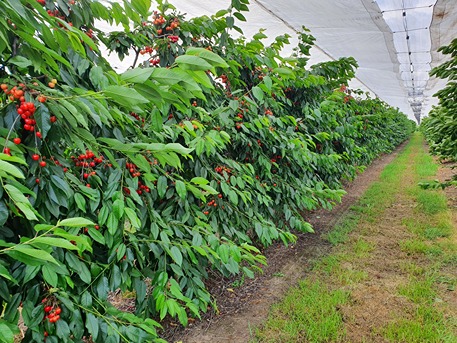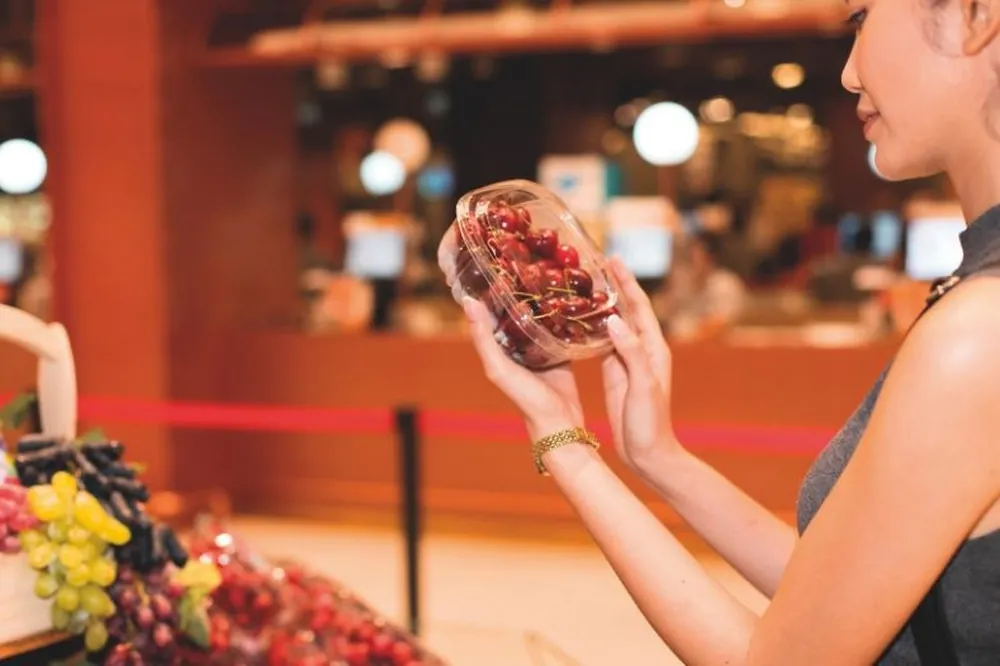Consumer preference for sweet cherries is mainly determined by their flavour and colour, but in recent years it has also been influenced by their nutritional value and the presence of bioactive compounds, including anthocyanins, polyphenols, carotenoids, vitamins C and E and antioxidants.
In addition, an increasing number of consumers focus on the sustainability of the entire production chain, including the balance between resource input and yield, impact on the environment, nutritional value of products and respect for workers' rights. Among these, physico-chemical studies are essential for the effective management of pre-harvest and harvest technologies in global cherry production.
Knowing, for example, how the quality of cherries varies within the same tree could change harvesting and sorting procedures. It was precisely these premises that guided researchers from the University of Naples Federico II (Italy), the University of Life Sciences in Iasi and the Research Station for Fruit Growing in Iasi (Romania).
The aim of the study was to assess the impact of cultivar and fruit position within the tree canopy during the pre-ripening or full ripening phases on the quality parameters of organically grown cherries. In 2022 and 2023, research was conducted at the experimental field of the Research Station for Fruit Growing in Iasi, north-eastern Romania.
The investigation looked at three cultivars: Van, Andreias and Margonia. Van is a highly productive and early variety, originating in Canada. It produces medium-large fruits (7.5-8.5 g), globular in shape, bright red in colour, with fragile pink-red flesh and a sweet and sour flavour.

Two new sweet cherry cultivars, Andreiaș and Margonia, have been developed and certified at the Research Station for Fruit Growing in Iași. The Andreiaș cultivar produces large, cordiform, red-brown, almost black fruits when fully ripe, weighing 8.5-9.5 g. The Margonia cultivar, on the other hand, produces yellow, cordiform fruits, slightly flattened and elongated at the tip, with an average weight of 8.0-9.0 g.
Quality indices highly valued by consumers, including the content of soluble sugars, vitamin C, carotenoids and anthocyanins, increased as the fruit ripened and changed colour. However, the pre-ripening stage of the fruit contained a higher concentration of polyphenolic compounds.
The quality parameters were significantly altered by the biochemical processes involved in the ripening process of the fruit. These changes were mainly influenced by the variation in seasonal weather conditions and cultivar, as well as the position of the fruit within the tree canopy.
The position within the canopy had a greater impact only on the dry matter content at pre-harvest, where a higher value was noted in fruits positioned in the outer part of the canopy. At harvest, on the other hand, the quality parameters were similar regardless of the position on the tree.
An influence was noted only on the polyphenol and vitamin C content, which had higher values in the outermost fruits. Fruits of the locally developed Andreias cultivar were the richest in antioxidants. This result suggests that this cultivar could be included in selection strategies within an organic management programme.
Fonte: Mineață, I.; Murariu, O.C.; Sîrbu, S.; Tallarita, A.V.; Caruso, G.; Jităreanu, C.D. Effects of Ripening Phase and Cultivar under Sustainable Management on Fruit Quality and Antioxidants of Sweet Cherry. Horticulturae 2024, 10, 720. https://doi.org/10.3390/horticulturae10070720.
Immagine: SL Fruit Service
Melissa Venturi
University of Bologna (IT)
Cherry Times - All rights reserved











